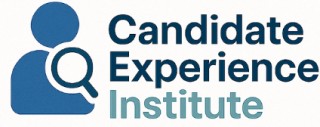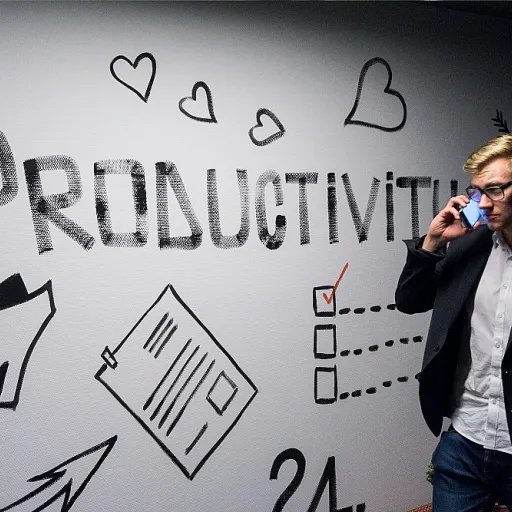
Understanding Workforce Enablement
In the rapidly evolving business landscape, organizations strive to optimize their performance and achieve their goals through effective workforce enablement. Central to this endeavor is the ability to fully support and empower employees to perform at their best. In essence, workforce enablement encompasses a broad spectrum of strategies, tools, and resources designed to enhance employee productivity, satisfaction, and engagement. By fostering a culture of continuous learning and development, companies can ensure their workforce remains competitive and innovative.
Empowering Employees for Success
Employee enablement goes beyond mere access to resources. It involves creating an enriching work environment where individuals feel valued and are motivated to contribute to the organization’s success. This includes offering flexible work arrangements and providing ample development opportunities that align with personal and business goals. When employees feel supported in their professional journeys, they are more likely to engage deeply with their work, leading to increased employee satisfaction and, ultimately, customer satisfaction.
Aligning Workforce Enablement with Business Objectives
For businesses aiming to meet their strategic goals, aligning workforce enablement with these objectives is crucial. Effective enablement strategies incorporate training development, tools, and technology to enhance decision-making processes and streamline service management. By integrating these components, organizations can ensure their employees are not only prepared to tackle current challenges but are also equipped to drive innovation and development within the company.
In the following sections, we will explore the critical role of candidate experience in enhancing workforce enablement. By identifying common pain points and implementing strategic improvements, organizations can foster a supportive environment where both employees and the company thrive. For insight into how talent assessments can enhance candidate experience, visit our blog on enhancing candidate experience through effective talent assessments.
The Role of Candidate Experience in Workforce Enablement
The Connection between Employee Enablement and Candidate Experience
For organizations, enabling employees through a solid candidate experience is a pivotal step toward achieving workforce enablement. It lays the foundation for productivity, satisfaction, and growth, aligning closely with business goals. A well-structured candidate experience can foster an environment where employees feel valued from the very beginning of their journey with a company. This positive start helps in creating a nurturing work environment which supports continuous learning and development opportunities.
Successful candidate experiences are directly tied to training development programs that promote diversity, equity, inclusion, and accessibility. These programs are essential for cultivating a culture that places importance on innovation and resource support while providing the necessary tools for employee enablement. By prioritizing DEIA training, organizations can ensure that new hires feel welcomed and integrated into a culture of diversity, which significantly enhances employee satisfaction and engagement.
Cultural Impact and Employee Satisfaction
Embedding a positive candidate experience within the cultural framework of an organization enhances employee engagement by fostering a supportive environment. This approach ensures that employees feel equipped with the resources they need to succeed, which in turn boosts overall job satisfaction. When a company prioritizes a seamless and enriching candidate experience, it not only attracts but also retains talent, thereby minimizing turnover rates.
The impact of such a strategy is apparent in increased employee satisfaction and continuous learning opportunities. Developing an enablement-focused culture helps bridge the gap between employee aspirations and organizational objectives, fueling productivity and innovation within the workforce. It ensures that flexible work arrangements and decision making facilitation are well-integrated within the organization, aligning with service management goals and promoting harmony within the workforce.
Identifying Pain Points in Candidate Experience
Addressing Challenges and Gaps in the Candidate Journey
The journey from a potential hire to an integrated team member is pivotal in workforce enablement. Many organizations, however, find that the candidate experience is marred by several pain points that hinder workforce enablement and broader business goals. Understanding and addressing these challenges is crucial for fostering a culture of productivity and employee satisfaction.
A primary issue stems from the lack of effective communication during the recruitment process. Candidates often feel disconnected or undervalued when organizations fail to provide timely and transparent updates. This not only affects candidate satisfaction but can also impact the company's image and future talent acquisition efforts. Organizations should ensure their communication strategies are clear and proactive, setting expectations for all parties involved.
Another significant barrier is the presence of bias or favoritism, which may lead to a lack of diverse perspectives within the workforce. Such favoritism can compromise the integrity of the hiring process and negatively impact employee engagement. It's crucial for businesses to develop fair and equitable recruitment practices. Further insights into the implications of favoritism can be explored in the article "is favoritism in the workplace against the law."
Organizations often neglect the integration of supportive technologies and resources that facilitate smooth onboarding. The absence of adequate tools can make it challenging for new employees to navigate their roles effectively. Investing in training development programs and enabling technologies can enhance workforce enablement by promoting continuous learning and development opportunities.
Flexible work arrangements, an increasingly popular demand, are frequently inadequately addressed during recruitment. Failure to communicate the company's stance on flexible work early in the candidate experience process can result in mismatched expectations. For organizations aiming to attract top talent, it is vital to articulate their commitments to enabling employees through adaptable work environments, thus aligning with contemporary business and workforce expectations.
In summary, identifying and mitigating pain points in the candidate experience is essential for achieving successful employee enablement. By addressing these issues, businesses can foster not only a more efficient onboarding process but also a more engaged and innovative workforce.
Strategies for Improving Candidate Experience
Nurturing Positive Interactions for Better Experiences
One of the pivotal elements in enhancing candidate experience is the nurturing of positive interactions at every touchpoint. This can involve creating a more welcoming atmosphere during interviews and ensuring that candidates feel valued, respected, and heard. Organizations can promote a culture that is open to feedback, allowing candidates to express their thoughts freely. This paves the way for a more inclusive and engaging environment.Streamlining Communication for Clarity and Transparency
Effective communication is key to improving candidate experience. Companies should prioritize timely and transparent communication, keeping candidates informed about the status of their application and next steps. This not only boosts candidate satisfaction but also aligns with the broader goal of workforce enablement by fostering trust and clarity in interactions.Aligning Recruitment Processes with Organizational Values
Recruitment processes should reflect the organization's values and goals. By aligning recruitment strategies with these principles, businesses can ensure that their workforce enablement efforts are consistent and coherent. Training and development opportunities can be integrated into recruitment to highlight the company's commitment to continuous learning and development, setting clear expectations from the onset.Personalizing the Candidate Journey
Personalization plays a crucial role in enhancing candidate experiences. Tailoring the recruitment process to address the unique needs and aspirations of each candidate can lead to higher employee satisfaction and engagement. Utilizing tools and technology to customize interactions can make candidates feel more connected to the company, thus supporting long-term employee enablement.Incorporating Feedback Mechanisms
Feedback is a vital component of improvement. Implementing avenues for candidates to provide feedback on their experience can offer valuable insights into areas of enhancement. This not only contributes to refining the candidate experience but also aligns with the organization's business goals by fostering a culture of continuous improvement and innovation. Applying these strategies can bridge the gap between candidate experience and workforce enablement, ultimately leading to a more productive and satisfied workforce.Leveraging Technology for Better Candidate Experience
Harnessing Advanced Tools and Technology
In today’s fast-paced business landscape, leveraging the right technology can make a substantial difference in enhancing the candidate experience and, by extension, workforce enablement. Organizations are increasingly utilizing innovative tools to streamline recruitment processes, which in turn fosters a culture of efficiency and satisfaction among potential employees. Incorporating technology in recruitment not only improves process efficiency but also aligns with business goals. By adopting automation and AI-driven solutions, companies can enhance the accuracy of candidate screenings and reduce biases. Furthermore, these tools can simplify communication, providing timely updates to candidates and ensuring that they feel valued throughout their journey.Creating a Supportive Work Environment
A supportive work environment is crucial for both employees and the organization. By offering flexible work arrangements and remote work options, organizations can cater to the diverse needs of their workforce and improve employee engagement. This adaptability not only contributes to employee satisfaction but also aligns with continuous learning and development. Organizations can encourage continuous learning through tailored training development programs that provide development opportunities aligned with individual career goals. Through these efforts, companies can invest in employee enablement, ensuring that their workforce is well-equipped to meet customer satisfaction demands and adapt to evolving business challenges.Fostering a Culture of Innovation and Engagement
A culture that encourages innovation and employee engagement is more likely to retain top talent. By prioritizing employee satisfaction and providing resources support, organizations can foster an environment where employees feel empowered to contribute to business development. This involves facilitating learning resources and creating forums for idea exchange, which enhances decision making and drives company growth. Ultimately, the integration of the right technology and a supportive work culture enables organizations to improve the candidate experience significantly. This strategic approach yields measurable benefits in both workforce productivity and overall business performance, aligning closely with the overarching goals of workforce enablement.Measuring Success: Metrics for Candidate Experience and Workforce Enablement
Quantifying Candidate Experience's Impact on Workforce Enablement
Organizations aspiring to drive improvements in their workforce through better candidate experiences must rely on quantifiable metrics. By evaluating these metrics, companies can ensure their talent acquisition processes are aligned with broader business goals and effectively support workforce enablement.Key Metrics for Evaluating Candidate Experience
To gauge the effectiveness of candidate experience strategies, consider tracking the following:- Time to Hire: Reducing the time from application to offer acceptance not only enhances candidate satisfaction but also accelerates workforce development.
- Candidate Net Promoter Score (NPS): This metric assesses how likely candidates are to recommend your company to other job seekers, reflecting their overall satisfaction with the recruitment process.
- Offer Acceptance Rate: A high acceptance rate indicates a positive candidate experience aligning with the company’s culture and business goals, fostering better retention and candidate engagement.
Enhancing Employee Enablement Through Improved Candidate Experience
Employing the above metrics helps organizations refine recruitment strategies, laying the foundation for a work environment that promotes continuous learning, innovation, and development opportunities. Workforce enablement thrives in an environment where employees feel valued, supported, and aligned with the organization's goals.Integrating Metrics into Business Strategy
Linking candidate experience metrics with ongoing employee enablement efforts allows businesses to:- Optimize Training and Development: By understanding which candidates transition most successfully into productive employees, organizations can tailor their training resources for maximum impact.
- Enhance Decision Making: Data-driven insights empower HR and management teams to make informed decisions on work arrangements and resource support, fostering a culture of feedback and improvement.
- Boost Customer Satisfaction: Engaged employees directly impact service management and customer experiences, as they are more likely to perform well and contribute to business success.













